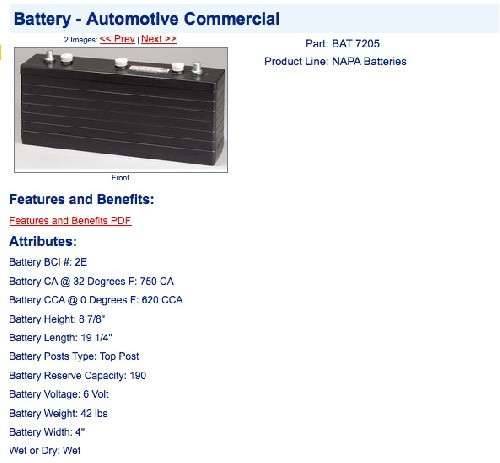|
Re: The Packard Institute's 1949 project
|
||||
|---|---|---|---|---|
|
Forum Ambassador
|
Quote:
Raynard, Good to see things are coming along with the project. I'll comment on a few matters which I'm sure the more knowledgeable and experienced here will provide greater insights and advice on shortly. drained the oil (several quarts of clear water drained first?): Sorry, this is a bad sign. Most likely a head gasket problem and should be looked at before you even think about starting her up. Or could be a symptom of a much greater problem. new plugs: Somebody else can answer this please? belts and hoses seem OK: After sitting for 25 years best to replace these anyway because they tend to perish. need a new 6volt battery: There are various threads about this which you can use the search function to find OR maybe somebody else can answer this please? flush the radiator, gas tank, and oil: All good things to do but each requires different approaches to ensure you get the job done properly. Again there are various threads about these which you can use the search function to find OR maybe somebody else can answer this please? The reason I don't go into detail is my relative inexperience in these matters but there are others who will guide you along.
Posted on: 2010/5/2 20:56
|
|||
|
Mal
/o[]o\ ====  Bowral, Southern Highlands of NSW, Australia "Out of chaos comes order" - Nietzsche. 1938 Eight Touring Sedan - SOLD 1941 One-Twenty Club Coupe - SOLD 1948 Super Eight Limo, chassis RHD - SOLD 1950 Eight Touring Sedan - SOLD What's this?  Put your Packard in the Packard Vehicle Registry! Here's how! Any questions - PM or email me at ozstatman@gmail.com |
||||
|
||||
|
Re: The Packard Institute's 1949 project
|
||||
|---|---|---|---|---|
|
Forum Ambassador
|
Raynard,
Another thought, may be viable or not but you'll be best placed to know. How about getting your troubled youth logged onto PackardInfo, just as "guests" so they can do the searching suggested? Besides researching their project they might gain a better appreciation of things Packard and see what us "mostly" old guys here are up to. And BigKev's Project Blog would be a very good source of information and pictures. Although not the same year as your '49, should be reasonably similar mechanically, and the techniques used in his project would be applicable to yours.
Posted on: 2010/5/2 21:57
|
|||
|
Mal
/o[]o\ ====  Bowral, Southern Highlands of NSW, Australia "Out of chaos comes order" - Nietzsche. 1938 Eight Touring Sedan - SOLD 1941 One-Twenty Club Coupe - SOLD 1948 Super Eight Limo, chassis RHD - SOLD 1950 Eight Touring Sedan - SOLD What's this?  Put your Packard in the Packard Vehicle Registry! Here's how! Any questions - PM or email me at ozstatman@gmail.com |
||||
|
||||
|
Re: The Packard Institute's 1949 project
|
||||
|---|---|---|---|---|
|
Home away from home
|
I agree with a compression test. Water in crankcase is never a good thing... I'd try pressurizing the cooling system with the oil drain plug out of the pan and the spark plugs removed.
Posted on: 2010/5/3 7:27
|
|||
|
Nothing says "America" like pistons the size of coffee cans turning dead dinosaurs into hydrocarbons!
Deluxe 8 Touring Sedan |
||||
|
||||
|
Re: The Packard Institute's 1949 project
|
||||
|---|---|---|---|---|
|
Forum Ambassador
|
I think at the very least I'd pull the oil pan and check. Oil floating on the water, depending on how much, means the oil pump pickup must have been at least partially submerged in water. Hopefully the engine hadn't been turned over enough to suck any water thru the system or any rust flakes if present.
Posted on: 2010/5/3 8:58
|
|||
|
||||
|
Re: The Packard Institute's 1949 project
|
||||
|---|---|---|---|---|
|
Quite a regular
|
Well, we swapped out the fluids, plugs, and battery. The radiator and head gasket appear to be intact at this time. The water that had drained was clear (no rust present. We're guessing we have a starter issue (see video) so far - but appreciate any feedback. The bottom line is that we're having a grand time, learning, and building relationships... and perhaps more than anything that is what this is about click here: what Packard Motor Car engineering sounds like after 30 idle years...
Posted on: 2010/5/9 16:04
|
|||
|
||||
|
Re: The Packard Institute's 1949 project
|
||||
|---|---|---|---|---|
|
Webmaster
|
Starter sounds like there is a problem with the bendix. Also have you checked to make sure the engine is not stuck? Also unless it was swapped out, you would have a generator in Packard, not an alternator.
Posted on: 2010/5/9 17:41
|
|||
|
-BigKev
1954 Packard Clipper Deluxe Touring Sedan -> Registry | Project Blog 1937 Packard 115-C Convertible Coupe -> Registry | Project Blog |
||||
|
||||
|
Re: The Packard Institute's 1949 project
|
||||
|---|---|---|---|---|
|
Home away from home

|
Dropping the pan before proceeding is the best advice you've received so far, in my opinion. Starting it with who-knows-what kind of sludge stuck to the pan and inside the oil pickup is asking for trouble.
Seriously, I would not attempt turning it over without quite a bit of careful preparation. If the pan and oil pump pickup clean up OK, replace and fill with oil. Then, take out the plugs and pour some penetrating oil into each plug hole and let it sit overnight. I use Marvel Mystery Oil, but others swear by their own brand of snake oil--they can chime in if they want to. About a quarter cup per cylinder should do it. Do NOT replace the plugs... After it sits overnight, try turning it BY HAND without the plugs in place. If it'll turn using the fan blade, that's ideal. If it doesn't, try turning it with a wrench on the crank pulley. If that doesn't do it, it's time to pull the head and see what's happening in there. Not to worry, this is pretty standard procedure with "barn finds" and any good wrench-benders like your students can do it with some supervision. If you can turn it by hand, give the starter a try. Once you've blown out the penetrating oil, replace the plugs with fresh ones. It might even start! Be ready for lots and lots of smoke. No worries, it'll clear up unless you have seriously bad rings or valves. Hold off buying parts until you know what needs to be done to loosen it up. For instance, you may not need a starter! Removing and bench testing the starter will tell the tale--very educational, too. Cranking 'er over will be much more exciting if she has a chance of firing up. Note: Trying to crank a seized engine can make a lot more work in the long run, because you can easily break a piston ring (or rings). Good luck! A little patience will pay.
Posted on: 2010/5/10 21:12
|
|||
|
Guy
Not an Expert |
||||
|
||||
|
Re: The Packard Institute's 1949 project
|
||||
|---|---|---|---|---|
|
Quite a regular
|
Thanks for all the great feedback guys. We've taken your suggestions, and things are moving forward. Well, actually, things are moving backwards... but we're learning.
The bad news: The gas tank was leaking, so we took it into the refurb shop. They just called to inform us that it is beyond repair (the sealing process). The starter may not need to be rebuilt. We're working on it. Should anyone find themselves in the area (NE Ohio), feel free to drop in on us!
Posted on: 2010/5/27 13:58
|
|||
|
||||
|
Re: The Packard Institute's 1949 project
|
||||
|---|---|---|---|---|
|
Quite a regular
|
"The Packard project"
Aug. 30 2010 It's almost September now, and we have only four weeks left at the donated garage space in Mogadore. We now need to asses where we are, and where we need to go with this project. After meeting with our new friend, and Packard expert Greg DeLagrange, a plan of action appears to be taking shape. Upon further inspection, ( I can't believe we missed it in the first place), Greg has concluded that our Packard was involved in a flood, which appears to have crested about half way up the car. This discovery explains the water which drained from the oil pan, the rotted, molded interior, and the mud coating on the floor of the cab. Although still in quite remarkable condition, (the body alone is amazingly solid), and worth the effort, there is indeed much to be done before the car is roadworthy. We now realize that a complete mechanical restoration front to back will be required. Although the top side of the engine...cylinder walls, cylinders, head, and valves, appear to be in wonderful condition, due to the flooding, Greg DeLagrange, a professional engine builder and Packard expert, has concerns about the engines bottom side ie...the crankcase. He therefore recommends the removal, and transportation of the 1400 lb. engine/transmission assembly to his location. Greg will perform a minor overhaul, and inspection of the engine, and transmission, to ensure its safe and reliable operation. The car, sans engine/transmission, shall then be transported to a currently unknown location (We need a new space!) where the remaining mechanical systems ie...brakes, steering, suspension etc..., and interior, upholstery, and other cosmetic issues, will be addressed in preparation for the re-installation of the engine/tranny assembly. A breakdown of the necessary procedures follows: Engine/Transmission (Greg DeLagrange) a.. remove, clean, inspect, and replace if necessary all eight valves and accompanying parts. (Greg has parts) b. remove, and replace all engine gaskets (we have them), while inspecting all accompanying parts, and systems. A list of those gaskets follows. 1. Carburator 2. Intake manifold 3. Exhaust 4. Head 5. Oil pan 6.Tranny pan? 7. Water pump 8. Main seal? Did I miss any? c. Inspect and address the crankcase ie...crankshaft, journals, connecting rods, and bearings for possible damage, and or corrosion caused by the flooding. Greg has a crankshaft ready to go if ours proves faulty. d. Transmission...service, inspect, and adjust (clutch pedal is WAY out of adjustment ) Car (Packard institute volunteer team?) a. brakes 1. remove, and turn drums (Greg has a drum lathe) 2. replace wheel cylinders (generic) don't have yet. 3. replace shoes, and hardware (need) 4. replace all lines 3/16 copper (need) 5. replace master cylinder (have) b. fuel system 1. Install new gas tank (need) 2. Install new gas lines 3/16 copper? (need) 3. Install new electric fuel-pump (need) c. suspension, and steering 1. replace shocks 2. inspect springs. 3. inspect ball joints, control arms, tie rods, etc... 4. service, and inspect differential (gasket, and fluid) d. Powerwash 1. underside 2. engine compartment 3. interior/cab (remove seats) e. Clean, and paint (POR 15) 1. underside 2. engine compartment. Although Greg estimates the turnaround time on his engine work to be around a month or two, he has also indicated that he estimates the total project time at about one year. We need a new space, tools, and lots of sweat and elbow grease for the car itself. I recommend all efforts, and capital to be focused on the above issues, and a minimal amount of attention to be paid to the appearance of the car itself. Although the current look is quite adequate, accepting the interior, I think that the "Rat Rod" look is appropriate for the final look of the car, as it is affordable, and requires little effort. Kids love flatblack, and skulls and crossbones! Jeff Selzer 8/30/10 (Thanks for the thorough update Jeff. Any 49 gas tanks out there? Raynard) Attach file:  (11.22 KB) (11.22 KB)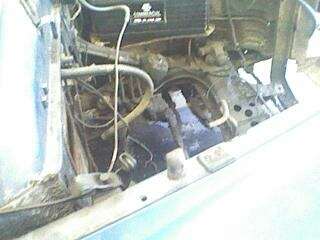  (12.96 KB) (12.96 KB)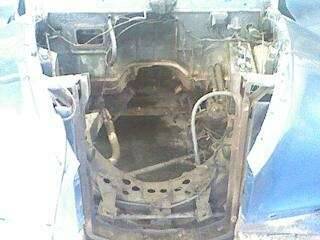  (10.41 KB) (10.41 KB)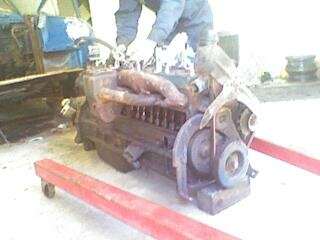  (10.25 KB) (10.25 KB)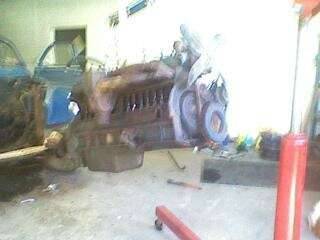
Posted on: 2010/8/31 12:24
|
|||
|
||||


